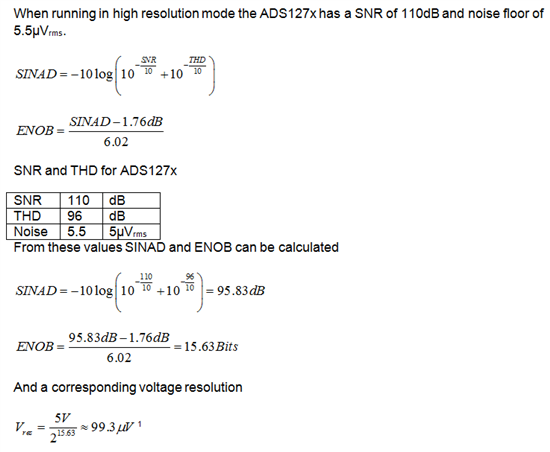Hi guys
I am using a 3-axis accelerometer which can measure +-2g with noise PSD=50ug/sqrt(Hz). I have been doing some number crunching, and based on my bandwidth of interest (100Hz) the rms noise is 0.5mg. A liberal requirement for a signal is then that it is at least 1mg which corresponds to 660uV. (Sensitivity = 0.66V/g)
In high resolution mode the ADS1274 has ENOB of 15.63 which results in a resolution of approximately 100uV.
My question:
Since the resolution of the sensor is 660uV and the resolution of the ADC is 100uV, do you still recomend that I amplify the signal in order to fill the full range of the ADC? (right now I am only using about 50% of the full range).
I suspect that I am doing to many assumptions and that I am missing some fundamental theory regarding these ADC range considerations? Any help is welcome.


